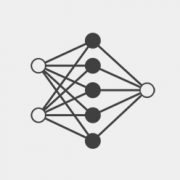We combined machine learning and epidemiological modelling to help public authorities manage critical healthcare resources, deliver targeted interventions and track disease spread within communities.

COVID-19 had a profound impact on healthcare systems across the globe. In densely populated regions with limited health resources and long lead times to respond to rising case numbers, it became essential to efficiently test at-risk individuals, quarantine infected patients, and treat those with severe symptoms.
To reduce fatalities, it was critical to ensure adequate capacity—such as ventilator-equipped hospital beds and oxygen supplies—and the availability of essential healthcare infrastructure. Local authorities were required to take a proactive approach to prevent public health facilities from being overwhelmed. Forecasting infections at the local level became vital to inform capacity planning, assess the impact of policy decisions, and prepare for varied scenarios.
We used SEIR-like compartmental differential equation models to predict disease spread. We fitted the parameters of the model, including initial values for populations in some of the unobserved compartments, to historical data using a Mean Absolute Percent Error (MAPE) loss function. We applied machine learning principles in the parameter fitting process, using black-box optimization techniques—specifically Bayesian optimization methods such as Hyperopt—to carry out the parameter sweep. We split the time series population data into ‘training’, ‘validation’, and ‘test’ sets.
We also developed a fast and robust Approximate Bayesian Model Averaging (ABMA) method to estimate confidence intervals for epidemiological parameters and forecasts. In addition, we introduced novel smoothing techniques to assign late-reported cases to the appropriate dates in the past.

© 2025 Wadhwani AI
ROLES AND RESPONSIBILITIES
An ML Engineer at Wadhwani AI will be responsible for building robust machine learning solutions to problems of societal importance; usually under the guidance of senior ML scientists, and in collaboration with dedicated software engineers. To our partners, a Wadhwani AI solution is generally a decision making tool that requires some piece of data to engage. It will be your responsibility to ensure that the information provided using that piece of data is sound. This not only requires robust learned models, but pipelines over which those models can be built, tweaked, tested, and monitored. The following subsections provide details from the perspective of solution design:
Early stage of proof of concept (PoC)
Late PoC
This is early to mid-stage of AI product development
Post PoC
Responsibilities during production deployment
We realize this list is broad and extensive. While the ideal candidate has some exposure to each of these topics, we also envision great candidates being experts at some subset. If either of those cases happens to be you, please apply.
DESIRED QUALIFICATIONS
Master’s degree or above in a STEM field. Several years of experience getting their hands dirty applying their craft.
Programming

ROLES AND RESPONSIBILITIES
As an ML Scientist at Wadhwani AI, you will be responsible for building robust machine learning solutions to problems of societal importance, usually under the guidance of senior ML scientists. You will participate in translating a problem in the social sector to a well-defined AI problem, in the development and execution of algorithms and solutions to the problem, in the successful and scaled deployment of the AI solution, and in defining appropriate metrics to evaluate the effectiveness of the deployed solution.
In order to apply machine learning for social good, you will need to understand user challenges and their context, curate and transform data, train and validate models, run simulations, and broadly derive insights from data. In doing so, you will work in cross-functional teams spanning ML modeling, engineering, product, and domain experts. You will also interface with social sector organizations as appropriate.
REQUIREMENTS
Associate ML scientists will have a strong academic background in a quantitative field (see below) at the Bachelor’s or Master’s level, with project experience in applied machine learning. They will possess demonstrable skills in coding, data mining and analysis, and building and implementing ML or statistical models. Where needed, they will have to learn and adapt to the requirements imposed by real-life, scaled deployments.
Candidates should have excellent communication skills and a willingness to adapt to the challenges of doing applied work for social good.
DESIRED QUALIFICATIONS
